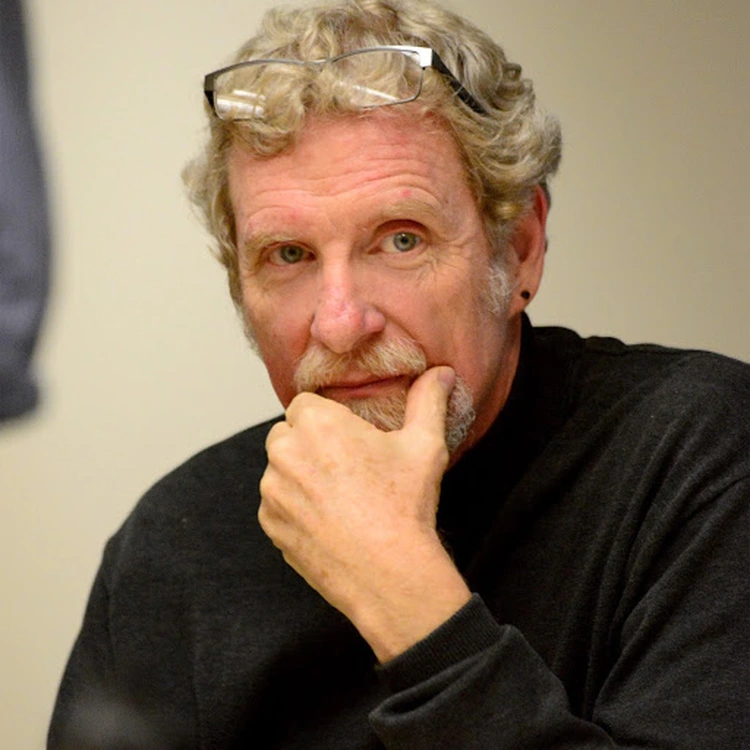Overview:
Ned Ruby has worked for 30 years on beneficial bacterial-host interactions. He was hired into the Symbiosis Cluster at the University of Wisconsin-Madison in 2004, where he held the Steenbock Chair of Microbiological Sciences, and was Vice-Chair of the Department of Medical Microbiology & Immunology. He has served on the Board of Governors of the American Academy of Microbiology, been a visiting professor at HuaZhong U, China, and an EU/Marie Curie ITN Researcher at the Max-Planck Institute, Bremen, Germany, and received the University of Hawaiʻi’s Regents Medal for Excellence in Research. Recently, he was a Moore Scholar at Caltech and was Chair of the American Academy of Microbiology Awards Board. With Nicole Dubilier, he instituted and chaired the Gordon Research Conference on Animal-Microbe Symbioses, and is currently directing the annual West Coast Bacterial Physiologists Conference at Asilomar, CA. Until recently, he co-directed the NIH-COBRE Integrative Center for Environmental Microbiomes and Human Health at the University of Hawaiʻi.
In 2022, Ruby moved his lab to the newly launched BSE. His current research uses (i) a broad-based approach to analyze how sequential signaling cascades and nutrient manipulation produce rhythmic patterns of bacterial metabolism that underlie symbiotic persistence, (ii) new analytical and imaging approaches to discover novel pathways of signaling between a symbiont and its host, and (iii) comparative and functional genomics and epigenetics to discover principles controlling population-level interactions among symbionts.
Research
Essentially all animal and plant species have long-term associations with specific microbial symbionts. In many cases, these associations have been shown to be essential to the normal health and development of the hosts. Among the most common kinds of interactions present in animals are those between extracellular bacteria and epithelial tissue. The long-term objectives of our research are to define the behavioral, physiological and molecular events that characterize the bacterial colonization of animal epithelial tissue.
-
Determine how specificity is achieved in environmentally transmitted bacteria-host associations.
-
Identify aspects of bacterial behavior that are essential to tissue tropism.
-
Characterize the molecular mechanisms that underlie successful tissue colonization.
-
Comparatively examine virulence factors of pathogenic bacteria that are required for symbiotic colonization.
-
Define the spatial patterns and temporal dynamics of non-clonal bacterial populations within monospecific associations.
-
Determine the suite of changes in bacterial gene expression that are induced by the environment of host tissues.
To accomplish these goals we have chosen as a natural study system the symbiotic association of the light-emitting organ of the squid Euprymna scolopes by the luminous bacterium Vibrio fischeri. This system provides a simple and experimentally accessible paradigm for studying specific host-bacterial interactions. Our recent investigations have centered on the events characterizing the initiation, colonization, and persistence of the symbiotic infection in newly hatched juvenile squids using bacterial mutants to manipulate, assay, and observe the results of the complex program of signaling and responses through which the host and bacterium communicate. We believe that this system also serves as a model of infection by pathogenic species of Vibrio and, perhaps, of the evolution of the virulence state in these and other pathogens; that is, bacterial and host determinants that potentiate light-organ symbiosis are revealing convergences with known bacterial virulence factors, and are promoting the discovery of as yet undescribed ones. This work will also aid our understanding of the mechanisms by which the benign colonization of mollusk tissue may serve as a reservoir for human pathogenic Vibrio species.
In recent years we, in conjunction with other labs working with Vibrio fischeri and the squid host, have developed and applied novel technical approaches to facilitate our research aims. Specifically, we have developed molecular genetics in this bacterium, sequenced the genome of a light organ isolate, and created transposon mutant libraries and glass-chip and Affymetrix DNA microarrays. In addition, using fluorescently labeled V. fischeri cells and confocal microscopy, we are characterizing the behavior of these bacteria during the initiation and development of symbiosis in living squid. Finally, by adapting microinjection techniques, we have begun to introduce symbiotically incompetent bacteria into the light organ to determine the colonization stage in which they are defective.
-
Mutagenesis Library: Construction of an ordered mutant library of the bacterial symbiont, Vibrio fischeri.
-
Flagella in Accommodation and Persistence: Investigating the role of flagella in the later stages of colonization of the light organ using microinjection techniques.
-
Competitive Dominance: The earliest site of species specificity in the V. fischeri-E. scolopes partnership is the dominance of V. fischeri in the host-derived mucus.
-
Natural Competence: Investigating the relationship between chitin and extracellular DNA uptake and use in V. fischeri.
-
AinS-mediated Quorum Sensing: Determining the role of the Vibrio fischeri AinS quorum-sensing system in the colonization of Euprymna scolopes.
-
Bacterial Diversity: Can static and dynamic patterns of diversity existing in natural V. fischeri populations found in E. scolopes light organs be related to current ecological and evolutionary theory?
-
Nitric Oxide Stress in the light organ environment: Study on the mechanisms of how Vibrio fischeri responds to and survives NO stress during symbiotic colonization to Euprymna scolopes.
